Gough Island is situated in the South Atlantic Ocean approximately 1,700 miles east of South America and is a British Overseas Territory.
The island possesses a unique ecosystem that attracts and sustains a wide range of bird species from across the world.
Birds on Gough Island range from albatross to diving-petrels, and from fairy prions to storm petrels. Gough Island houses several endemic species of birds, some of which are endangered or vulnerable.
The remote location and lack of human population on the island make it a critical habitat for several bird species that nest and breed in this pristine environment.
This article will explore the different bird species found on Gough Island, including their habitats and nesting habits, as well as the conservation efforts implemented to protect these fragile birds.
1. White-Bellied Storm Petrel
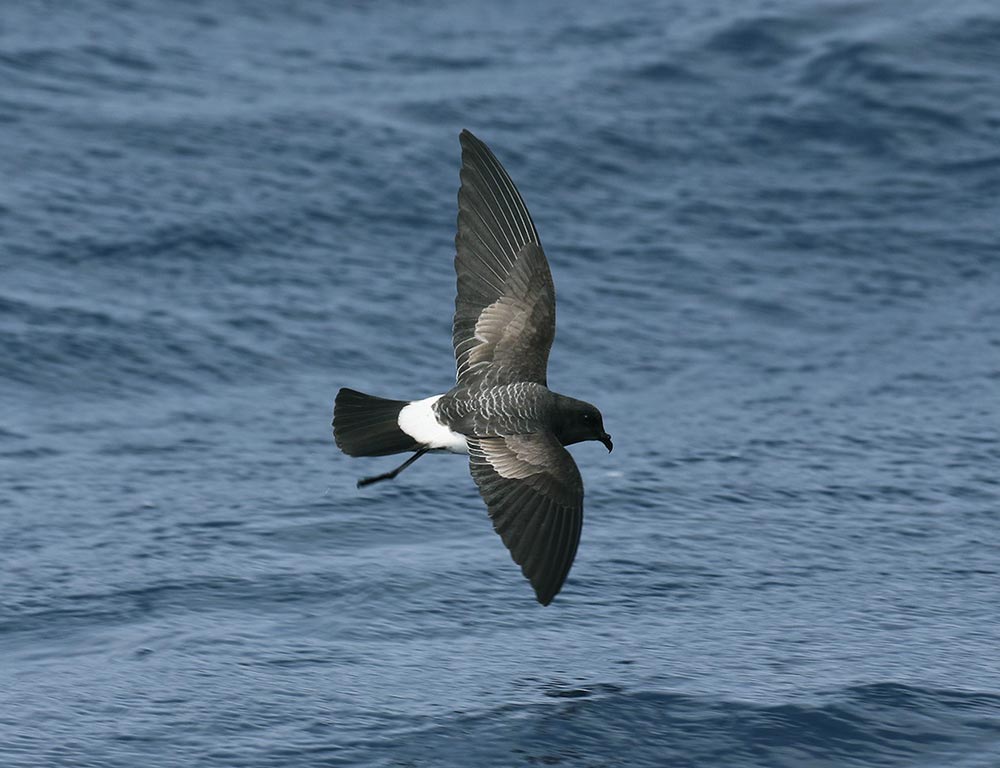
The White-bellied Storm Petrel is a small seabird that can be found in many different places around the world such as Angola, Argentina, Australia, Brazil, and more.
Its natural habitat consists of open seas. It was formally described by French ornithologist Louis Jean Pierre Vieillot back in 1818.
This species has black upperparts with white underparts including its breast and belly which gives it an overall greyish appearance when seen from afar.
They are mostly observed flying low over the sea surface or hovering above waves foraging for food during low tide periods; their diet mainly consists of crustaceans like squid and shrimp along with fish larvae.
Scientific classification:
| Kingdom | Animalia |
| Phylum | Chordata |
| Class | Aves |
| Order | Procellariiformes |
| Family | Oceanitidae |
| Genus | Fregetta |
| Species | F. grallaria |
Also Featured In: Beautiful Brazilian Birds, Birds That Live In Tristan da Cunha
2. Sooty Albatross
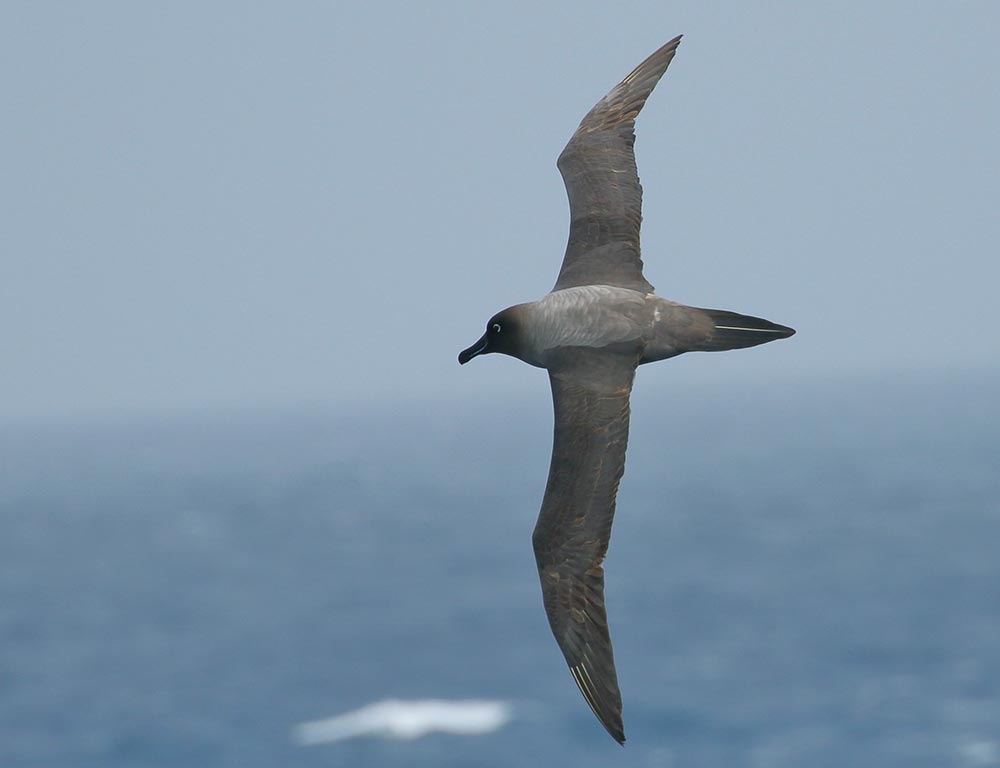
The Sooty Albatross is a species of bird in the albatross family, belonging to the order Procellariiformes. It is also known as Dark-mantled or Black-mantled Albatross.
They breed on sub-Antarctic islands and range at sea across the Southern Ocean from South America to Australia.
The sooty albatross stands out due to its dark brown plumage which appears almost black against sunlight when flying above the water surface.
These birds feed mainly on fish but have been recorded eating squid, crustaceans, and even carrion occasionally.
In terms of behavior, they are social creatures that often forage near fishing boats as well as congregating around floating objects like buoys or logs with other seabirds looking for food scraps left behind by them.
Overall, the sooty albatross lives an interesting life in the southern hemisphere’s oceans while providing us with spectacular views during flight.
Scientific classification:
| Kingdom | Animalia |
| Phylum | Chordata |
| Class | Aves |
| Order | Procellariiformes |
| Family | Diomedeidae |
| Genus | Phoebetria |
| Species | P. fusca |
Also Featured In: Common birds in Mozambique ,
3. Great Shearwater
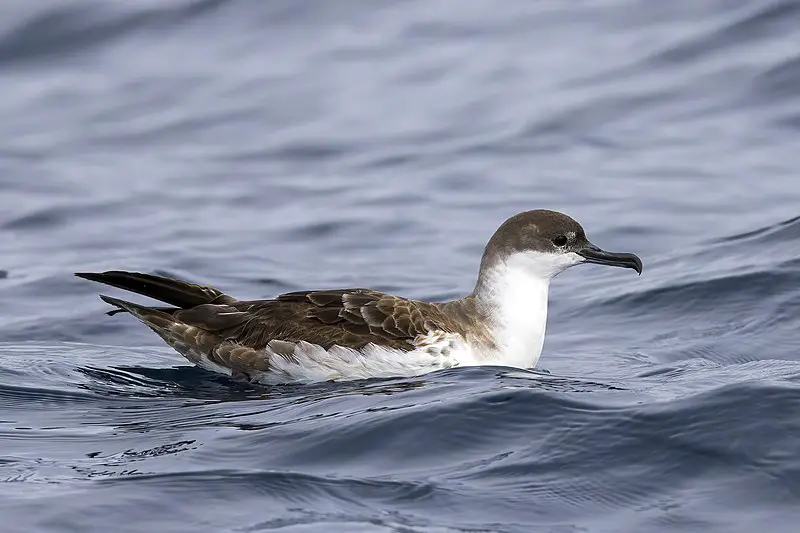
The Great Shearwater is a large seabird from the Procellariidae family. It breeds in colonies on rocky islands located in the South Atlantic, and during non-breeding season it can be found across most of the Atlantic Ocean.
It was first described by Irish naturalist Bernard O’Reilly in 1818 under its scientific name ‘Procellaria gravis’.
This bird has pale grey upper wings with a white underside that may sometimes show brownish markings around its neck area.
Its diet consists mainly of fish but also small squid, crustaceans and mollusks which they catch by surface plunging or pursuit diving while flying low over water surfaces.
The great shearwater is threatened to some extent due to human activities like fishing using gill nets, destruction of habitat for development projects as well as plastic debris ingested through feeding which affects their health adversely leading to mortality rates at an alarming rate making them vulnerable species.
Scientific classification:
| Kingdom | Animalia |
| Phylum | Chordata |
| Class | Aves |
| Order | Procellariiformes |
| Family | Procellariidae |
| Genus | Ardenna |
| Species | A. gravis |
Also Featured In: Cabo Verde birds, Birds that Live in Newfoundland and Labrador
4. Atlantic Petrel
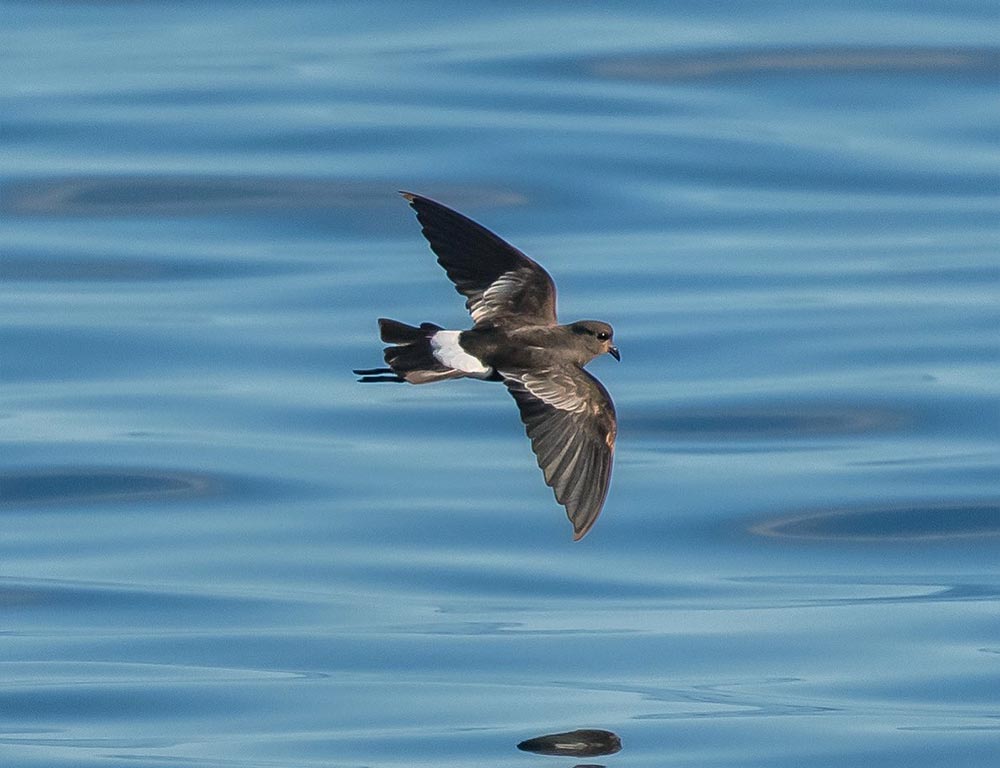
The Atlantic petrel is a large and stocky dark-colored seabird that can be found in the South Atlantic Ocean. It breeds in huge colonies on Tristan da Cunha and Gough Island, ranging from Brazil to Namibia at sea.
Most records of these birds exist to the west of their breeding islands along the subtropical convergence line.
Standing about 43 cm high, they are powerful flyers with white bellies and black wings tipped with white spots; underwings have an “M” pattern when viewed from above while flying overhead.
They prefer offshore waters over open ocean but will occasionally come to shore for rest or food during migration times as well as nesting season when it arrives.
Scientific classification:
| Kingdom | Animalia |
| Phylum | Chordata |
| Class | Aves |
| Order | Procellariiformes |
| Family | Procellariidae |
| Genus | Pterodroma |
| Species | P. incerta |
Also Featured In: Birds that Live in the Ocean , Ocean Island Birds You Didn’t Know
5. Antarctic Prion
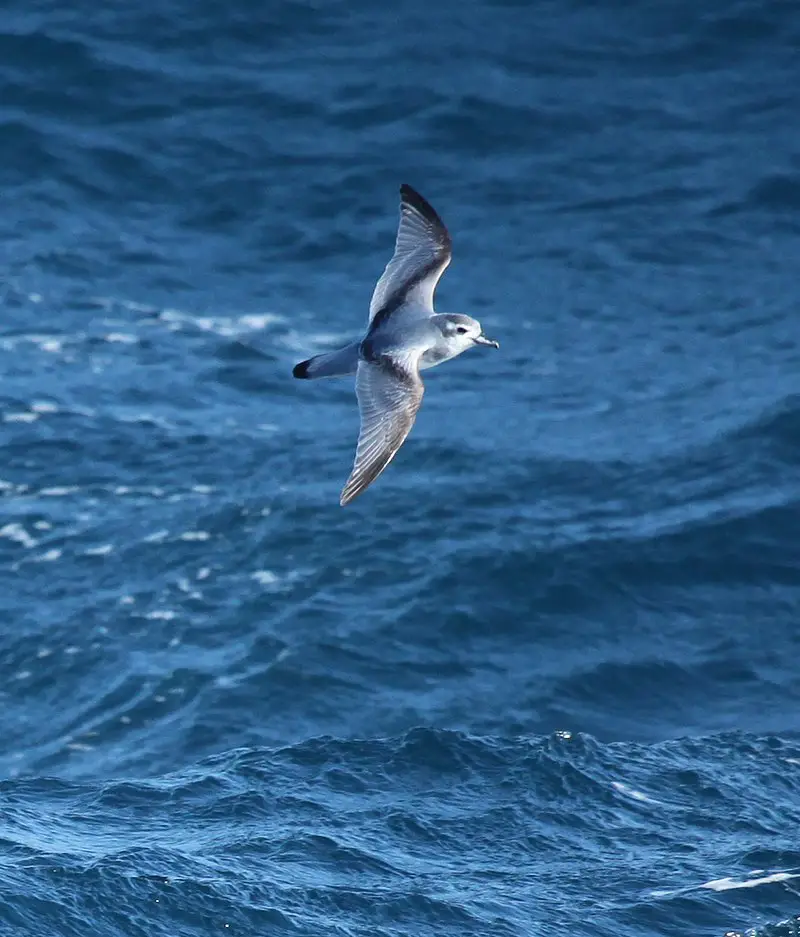
The Antarctic Prion is the largest of all prions, a genus of small petrels found in the Southern Ocean.
It was first described by German naturalist Johann Friedrich Gmelin in 1789 as part of an updated edition to Carl Linnaeus’ “Systema Naturae” and placed with other petrels under his Pro genus.
The bird has two distinct morphs – one dark gray-brownish back color and another lighter gray morph that can be spotted during migrations across different parts of Antarctica’s coastlines.
Its diet consists mainly of crustaceans and fish which it scoops up while flying through surface waters on its long wingspan.
While they are often seen alone or in pairs, large groups may also form when feeding near krill concentrations or human settlements such as research stations around Antarctica’s coasts.
Scientific classification:
| Kingdom | Animalia |
| Phylum | Chordata |
| Class | Aves |
| Order | Procellariiformes |
| Family | Procellariidae |
| Genus | Pachyptila |
| Species | P. desolata |
Also Featured In: Antarctica Birds, Tundra Birds
6. Broad-Billed Prion
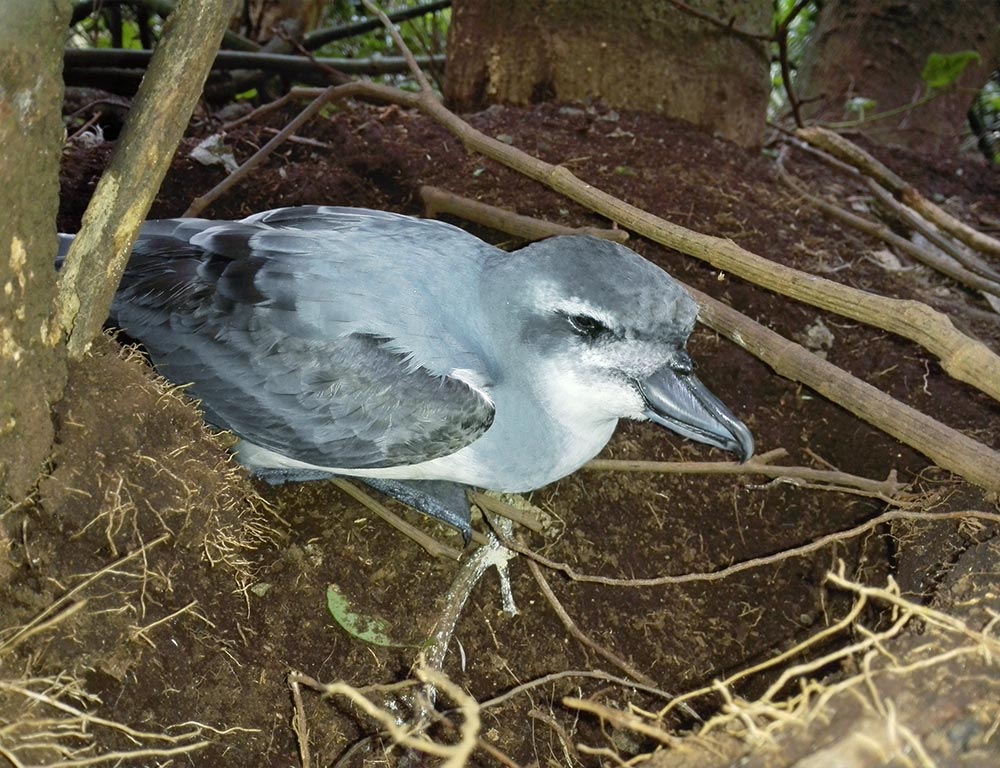
The Broad-billed Prion is an impressive seabird with a wingspan of up to 28 inches. Its grey upperparts are contrasted by white underparts and both sexes look alike.
It inhabits the southeast Atlantic Ocean, near the Antarctic Convergence to New Zealand.
They breed mainly on Tristan da Cunha and Gough Islands in South Atlantic; as well as South Pacific areas such as Macquarie Island, Chatham Islands, Auckland Islands etc.
During breeding season they build their nests out of vegetation or mud burrows dug into cliffsides or slopes.
These birds eat crustaceans and small fish which they catch while flying low over surface water at night time along coastlines.
Their population numbers have been decreasing due to marine pollution caused by human activities like fishing trawlers that often discard plastic materials which can cause entanglement for these birds leading them towards death unless rescued quickly enough.
Scientific classification:
| Kingdom | Animalia |
| Phylum | Chordata |
| Class | Aves |
| Order | Procellariiformes |
| Family | Procellariidae |
| Genus | Pachyptila |
| Species | P. vittata |
Also Featured In: Most Common Birds in Stewart Island, Welcome Islands Birds You Need To Know
7. Grey Petrel
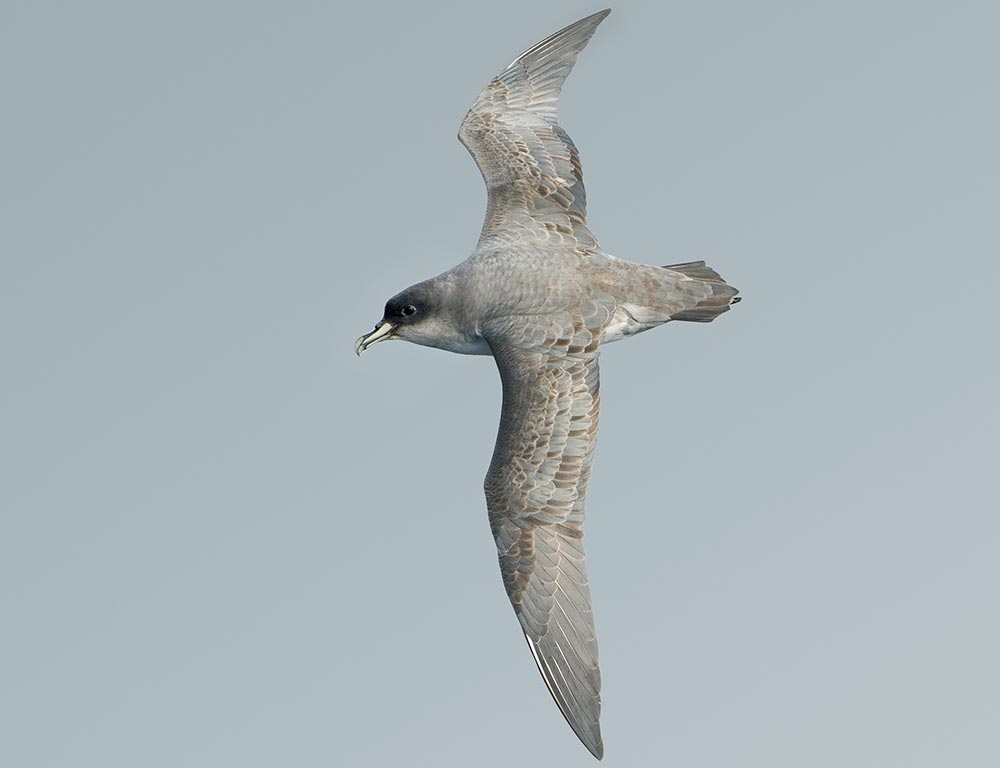
The Grey Petrel is a species of seabird in the Procellariidae family found mainly between 32°S and 58°S.
They are pelagic birds, meaning they spend most of their lives out at sea, only returning to shore for breeding season.
The bird was first formally described by German naturalist Johann Friedrich Gmelin in 1789 under its binomial name ‘Procellaria cinerea’.
It is also known as the Brown Petrel, Pediunker, or Grey Shearwater due to its grey plumage and black bill with yellow tip.
Its wingspan can reach up to 68 cm long and it feeds on small fish such as sardines or anchovies which it catches close to the surface of water while flying low over ocean waves.
Scientific classification:
| Kingdom | Animalia |
| Phylum | Chordata |
| Class | Aves |
| Order | Procellariiformes |
| Family | Procellariidae |
| Genus | Procellaria |
| Species | P. cinerea |
Also Featured In: Beautiful Birds Found in Central Islands,
8. Great-Winged Petrel
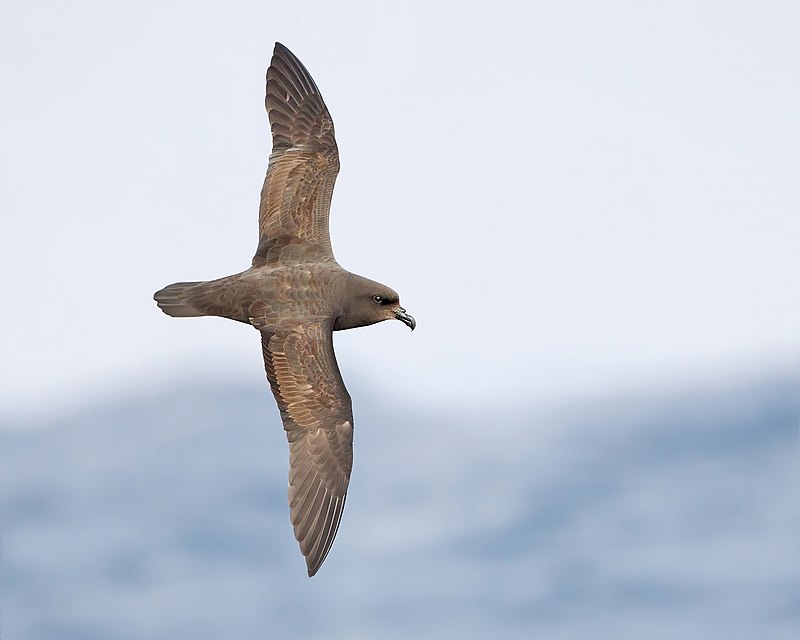
The Great-winged Petrel is a remarkable species of seabird found in the open ocean and coastal areas.
Its scientific name, Pterodroma macroptera, reflects its unique flying abilities; it has large wings that enable it to soar gracefully over long distances.
This petrel can be identified by its greyish body plumage with white underparts and tail feathers, as well as a distinctive black cap on its head.
It feeds mainly on fish but also consumes squid, crustaceans, and carrion when available. In 2014 genetic research revealed that this bird consists of two distinct subspecies: Pterodroma m.
macroptera and Pterodroma m gouldi which are now classified as separate species – the Grey-faced Petrel (Ptererodoma gouldi).
Both have great conservation value due to their important role in some Pacific Island ecosystems where they act like scavengers helping maintain healthy populations of other marine life such as seals or sea lions.
Scientific classification:
| Kingdom | Animalia |
| Phylum | Chordata |
| Class | Aves |
| Order | Procellariiformes |
| Family | Procellariidae |
| Genus | Pterodroma |
| Species | P. macroptera |
9. Northern Rockhopper Penguin
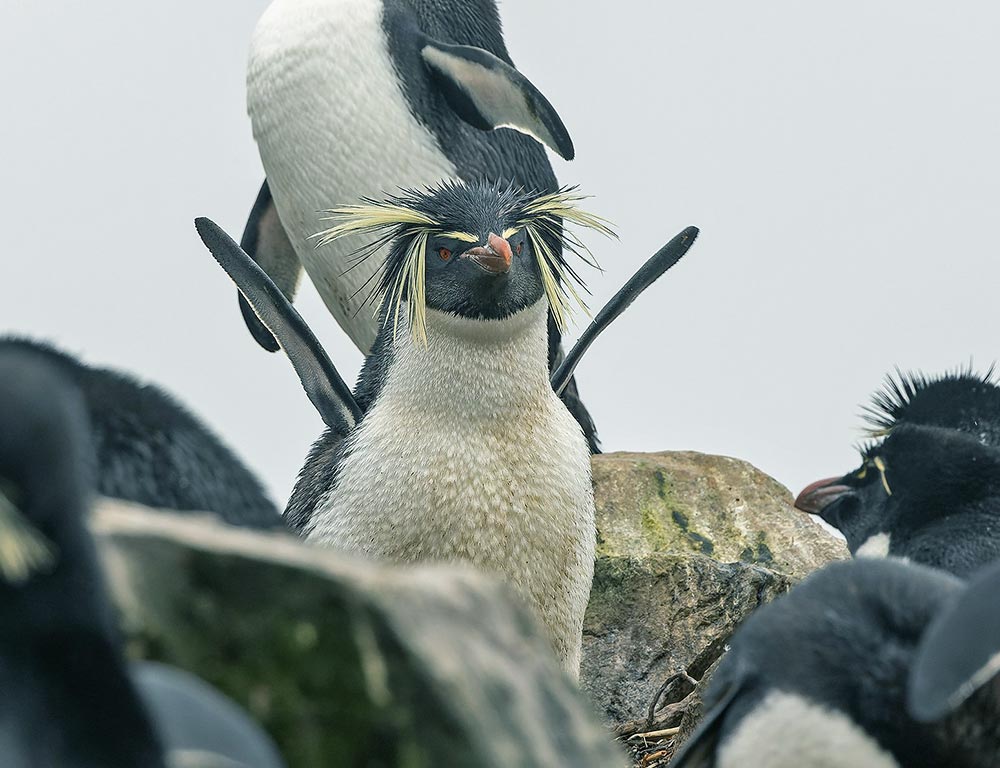
The Northern Rockhopper Penguin (Eudyptes moseleyi) is a species of penguin native to the southern Indian and Atlantic Oceans. It is distinct from its cousin, the Southern Rockhopper Penguin.
This unique species has experienced a dramatic population decline since the 1950s; research estimates that numbers have decreased by 90%.
The main threats faced by this bird include overfishing, climate change, pollution, and egg harvesting for food.
As such, conservation efforts are needed to ensure that these birds do not become extinct in our lifetime.
Furthermore, their natural habitats need better protection so they can thrive without interference from humans or human-induced activities like fishing trawlers which damage their nesting grounds on shorelines around islands where they breed during certain times of year.
Scientific classification:
| Kingdom | Animalia |
| Phylum | Chordata |
| Class | Aves |
| Order | Sphenisciformes |
| Family | Spheniscidae |
| Genus | Eudyptes |
| Species | E. moseleyi |
Also Featured In: Penguins Species,
10. Tristan Albatross
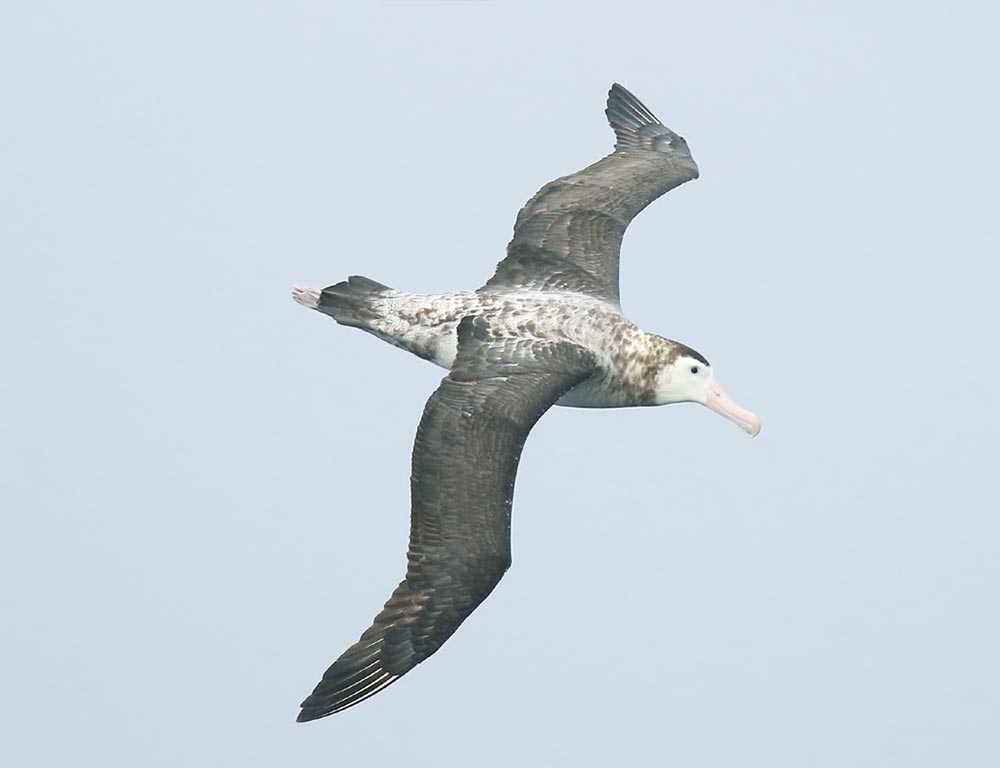
The Tristan albatross is a majestic seabird from the Diomedeidae family, classified as one of the great albatrosses in 1998.
It has special features that distinguish it from other members of its genus such as shearwaters, petrels, and storm petrels.
Its wingspan can reach up to 8 feet and it uses dynamic soaring for long-distance travel over water surfaces.
They form lifelong pairs with their mates during mating season which happens once every two years on Gough Island in South Africa where they nest until December before migrating back out to sea again after breeding.
The diet mostly consists of squid but some species also feed on fish or krill depending on what’s available at any given time.
These birds are considered very intelligent due to their ability to remember food sources and migrate accordingly each year without fail despite having no visual landmarks along the way.
Scientific classification:
| Kingdom | Animalia |
| Phylum | Chordata |
| Class | Aves |
| Order | Procellariiformes |
| Family | Diomedeidae |
| Genus | Diomedea |
| Species | D. dabbenena |
Also Featured In: Albatross Species,
11. Atlantic Yellow-Nosed Albatross
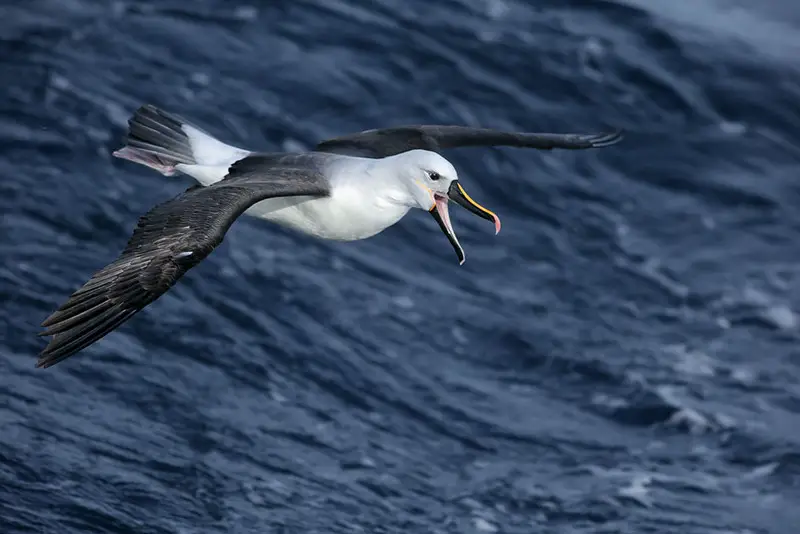
The Atlantic yellow-nosed albatross is a large seabird belonging to the albatross family Diomedeidae. It has gray and white plumage, with pale yellow markings around its nose and eyes.
This small mollymawk was once thought to be the same species as the Indian Yellow-Nosed Albatross, but now it is recognized as distinct.
Its diet consists of squid, fish eggs, and other marine creatures that can be found near the surface of the ocean.
It nests on islands off coastlines in southern Africa and South America during breeding season from October to April each year.
The Atlantic yellow-nosed albatrosses are typically solitary birds yet they will congregate at nesting sites for mating purposes or form feeding flocks when food becomes abundant in an area..
They have been classified as vulnerable by the IUCN due to their decreasing population numbers caused by fishing activities which entangle them accidentally into nets.
Scientific classification:
| Kingdom | Animalia |
| Phylum | Chordata |
| Class | Aves |
| Order | Procellariiformes |
| Family | Diomedeidae |
| Genus | Thalassarche |
| Species | T. chlororhynchos |
Also Featured In: Endangered Birds of New Zealand, Birds That Live around East Falkland
12. Spectacled Petrel
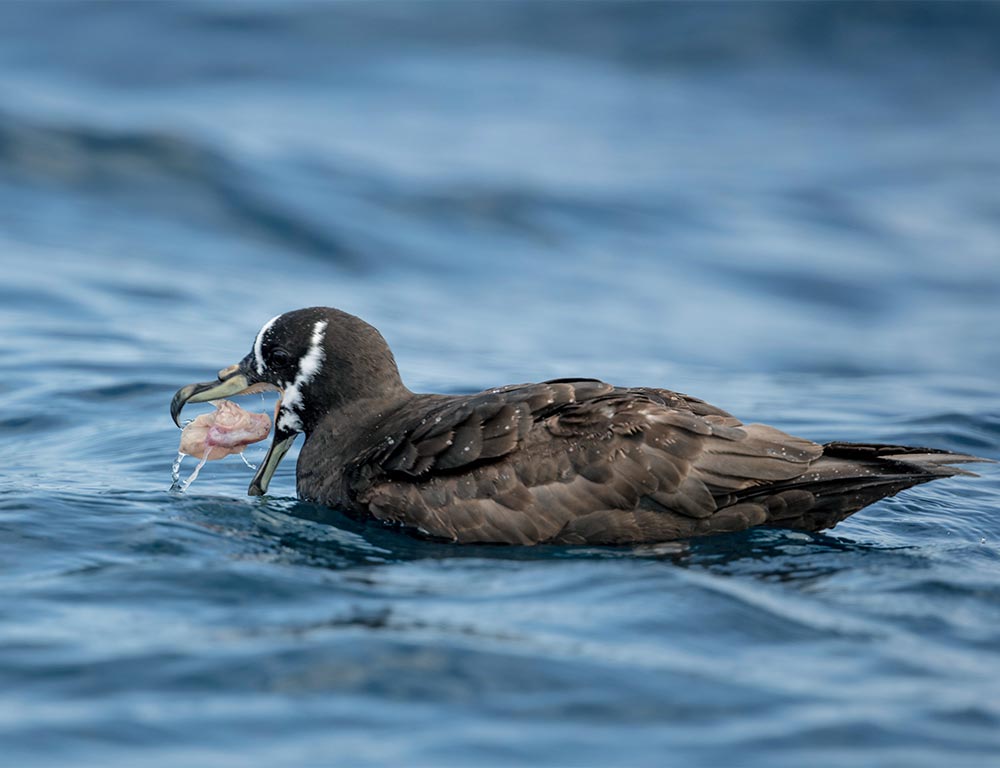
The Spectacled petrel is a seabird that is found exclusively on Inaccessible Island, located in the South Atlantic Tristan da Cunha group.
This burrowing bird is one of the largest petrels and is known for its distinctive appearance due to the markings around its eyes that resemble glasses or spectacles.
Despite its unique appearance, the Spectacled petrel was formerly considered a subspecies of the white-chinned petrel.
This rare bird is a vital part of the ecosystem on Inaccessible Island and plays an important role in the food chain.
Due to its restricted habitat and low population numbers, conservation efforts are critical to ensure the survival of the Spectacled petrel.
Scientific classification:
| Kingdom | Animalia |
| Phylum | Chordata |
| Class | Aves |
| Order | Procellariiformes |
| Family | Procellariidae |
| Genus | Procellaria |
| Species | P. conspicillata |
13. Gough Moorhen
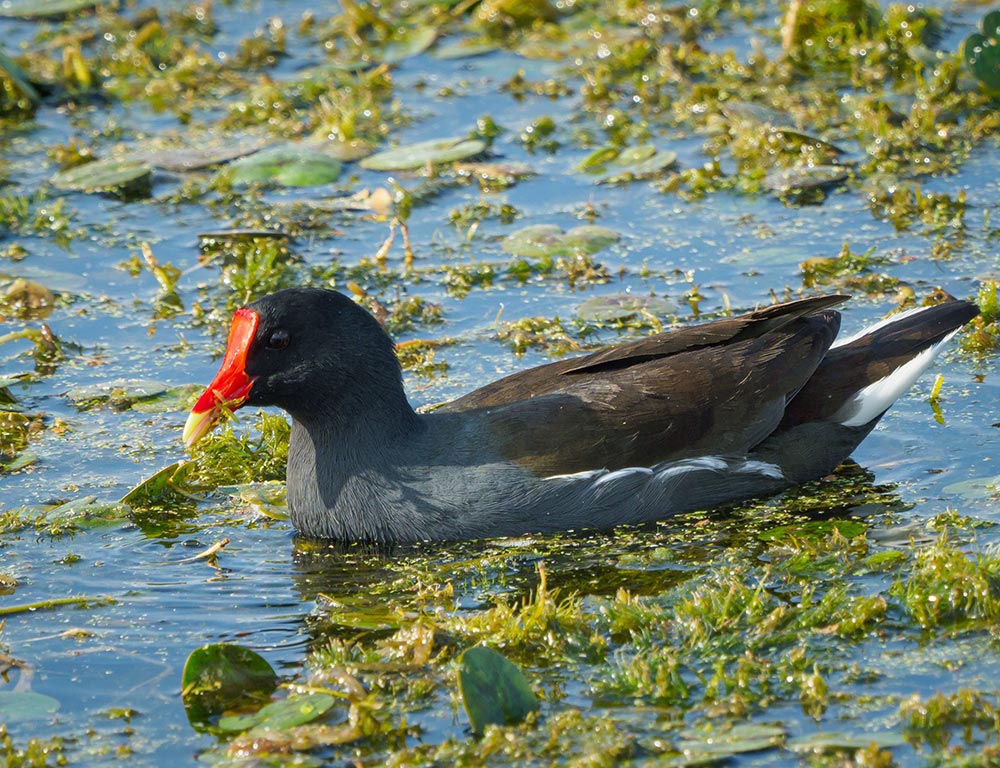
The Gough moorhen is a bird that is similar to the common moorhen but is smaller and stockier with shorter wings. It has a yellow-tipped red bill and a red frontal shield.
It was first described in 1888 by polar explorer George Comer, and its specific name honors him. The Gough moorhen is a medium-sized, almost flightless bird.
Scientific classification:
| Kingdom | Animalia |
| Phylum | Chordata |
| Class | Aves |
| Order | Gruiformes |
| Family | Rallidae |
| Genus | Gallinula |
| Species | G. comeri |
14. Tristan Moorhen
The Tristan moorhen (Gallinula nesiotis) was a flightless rail species that used to call the South Atlantic island of Tristan da Cunha home. It closely resembled the Gough moorhen, which lived on Gough Island about 400 miles away.
Although the Tristan moorhen was once abundant on the island, it became rare in 1873 and was completely extinct by the end of the 19th century.
This was primarily due to hunting and predation by introduced species. Unfortunately, we will never be able to see this unique and now extinct bird species in person.
Scientific classification:
| Kingdom | Animalia |
| Phylum | Chordata |
| Class | Aves |
| Order | Gruiformes |
| Family | Rallidae |
| Genus | Gallinula |
| Species | †G. nesiotis |
To Recap
Gough Island is a remote and ecologically significant haven for birdlife. This list of 14 remarkable Gough Island birds provides a glimpse into the unique avian diversity that thrives in this isolated South Atlantic outpost.
From the majestic Tristan albatross to the charismatic Gough bunting, these species have adapted to life on this rugged island, making it their home.
As we appreciate and learn about these birds, we also recognize the importance of conservation efforts to protect their fragile ecosystems.
By safeguarding Gough Island and its avian inhabitants, we ensure that future generations can marvel at the natural wonders it has to offer.